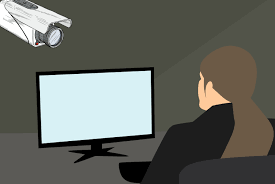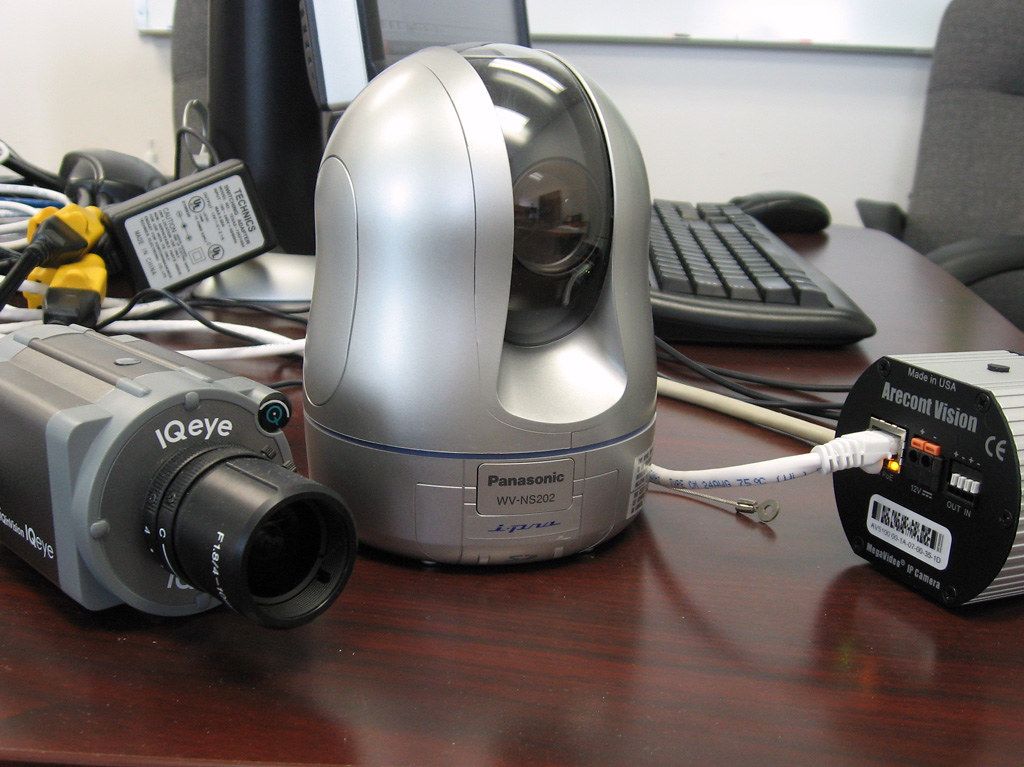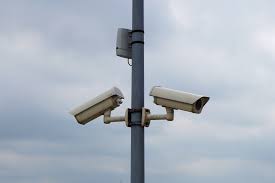Can you use CCTV cameras without a DVR? The answer is yes! While DVRs are commonly used for storing and managing footage, alternative options are available. This guide will explore various methods and technologies that allow you to use CCTV cameras without needing a DVR.
We'll review the different techniques and their advantages, whether via network-attached storage (NAS) devices, cloud storage, or standalone cameras with built-in storage. We'll discuss the considerations and limitations associated with each method to help you determine the most suitable solution for your surveillance needs.
By understanding the possibilities of using CCTV cameras without a DVR, you can explore flexible and convenient options for monitoring and securing your property.
Do You Need a DVR for CCTV Cameras?
While DVRs are commonly used for CCTV camera footage storage, they're only sometimes necessary. Alternative options include cloud storage, network-attached storage (NAS), or cameras with built-in storage.
The need for a DVR depends on factors like storage requirements, budget, and desired features. A DVR may be beneficial if you prefer centralized storage and advanced functionality like remote access and playback.

Yet, DVR-less options are more affordable and convenient for more straightforward installations or where scalability and flexibility are top concerns. To decide if a DVR is required for your CCTV camera setup, consider your surveillance requirements and the accessible solutions.
Security Considerations for CCTV Without DVR
When using CCTV cameras without a DVR, security considerations are paramount. Ensure cameras have strong password protection and firmware updates to prevent unauthorized access.
Opt for encrypted cloud or local storage to safeguard footage. Regularly monitor camera feeds and review stored footage to detect any suspicious activity promptly.
Invest in strong network security protocols to ward off online attacks. By giving priority to security procedures and exercising constant caution, you may preserve the integrity and efficacy of your CCTV system even in the absence of a DVR.
Connecting CCTV Cameras Directly to a Monitor
Connecting CCTV cameras directly to a monitor is a simple and efficient way to view live footage without needing a DVR. By using the camera's video output ports, such as HDMI or VGA, you can directly connect them to a compatible monitor.
This setup allows for real-time monitoring of camera feeds, making it ideal for small-scale surveillance applications or temporary setups. It's essential to note that with a DVR, you will have recording capabilities and advanced features like playback and remote access.
Consider factors like cable length limitations and power supply requirements when configuring this configuration. CCTV cameras can be directly connected to a monitor to form a simple surveillance system that can temporarily be used for home security, small business monitoring, or event surveillance.
Powering CCTV Cameras Without a DVR
CCTV cameras can be powered without a DVR using alternative methods such as PoE (Power over Ethernet), DC power adapters, or solar panels. PoE allows cameras to receive power and data through a single Ethernet cable, simplifying installation and reducing wiring complexity.
DC power adapters provide a direct power source to the cameras, while solar panels offer an eco-friendly solution for remote or off-grid locations. Additionally, battery-powered cameras provide flexibility and mobility without a continuous power source.

Even without a DVR, you may deploy CCTV cameras efficiently in various settings and configurations using these alternate power alternatives. When selecting the ideal power solution for your CCTV camera setup, consider variables like power consumption, dependability, and scalability.
Streaming CCTV Footage to the Cloud
Streaming CCTV footage to the cloud offers numerous advantages for surveillance systems. It provides remote access to live video feeds and stored footage from anywhere with an internet connection. By leveraging cloud storage, you can securely store video data off-site, reducing the risk of tampering or theft.
Cloud-based solutions often offer scalable storage options, allowing you to expand storage capacity as needed without investing in additional hardware. Advanced features like motion detection, alerts, and analytics are also available with cloud-based surveillance platforms, enhancing security and operational efficiency.
Internet bandwidth, data security, and subscription costs should be considered when implementing cloud-based CCTV streaming. Streaming CCTV footage to the cloud offers a convenient and flexible solution for modern surveillance needs.
CCTV Cameras With Built-in Storage
CCTV cameras with built-in storage offer a convenient and self-contained solution for video recording. These cameras have onboard memory or slots for memory cards, allowing them to store footage locally without needing external recording devices like DVRs or NVRs.
Built-in storage cameras are ideal for small-scale surveillance applications or locations with limited or unreliable network connectivity. They provide a simple plug-and-play setup, enabling users to start recording immediately after installation.
It's essential to consider storage capacity limitations and potential risks such as theft or damage to the camera, compromising stored footage. Notwithstanding these drawbacks, CCTV cameras with built-in storage provide an easy and affordable way to record and store video footage, making them appropriate for various home and business security requirements.
Can CCTV work without WIFI?
CCTV cameras can work without Wi-Fi by utilizing alternative connectivity options such as wired Ethernet connections or local storage solutions. Cameras connected via Ethernet cables can transmit video footage directly to a DVR or NVR without relying on Wi-Fi.
CCTV cameras with built-in storage, such as memory cards or onboard storage, can record video locally without internet connectivity. Although Wi-Fi makes cloud storage and convenient remote access possible, CCTV systems can still perform well in places without Wi-Fi coverage or for users who would instead not rely on wireless networks.
Does CCTV work if the DVR is off?
CCTV cameras can still capture video footage even if the DVR is turned off. However, without the DVR, the cameras won't be able to record or store the footage for later viewing.
The DVR needs to be powered on and properly configured to enable recording and access to recorded footage. While the cameras can continue to transmit live video feeds, ensuring the DVR is operational to capture and store footage for security purposes is essential.
Regularly check the DVR's status and power supply to ensure uninterrupted surveillance coverage. Consider implementing backup power solutions or cloud storage options to mitigate the risk of data loss in the event of DVR downtime or power outages.
What is the difference between CCTV and DVR?
CCTV (Closed-Circuit Television) refers to a system of cameras, monitors, and other equipment used for surveillance and security purposes. CCTV cameras capture video footage, which is then transmitted to monitors for real-time viewing or recorded for later playback.
On the other hand, a DVR (Digital Video Recorder) is a device used to record and store video footage captured by CCTV cameras. It digitizes analog video signals from the cameras and stores them on a hard drive for later retrieval.
The main difference between CCTV and DVR is their function: CCTV encompasses the entire surveillance system, including cameras and monitors. DVR specifically refers to the device used for recording and storing video footage. While CCTV cameras can operate without a DVR, the DVR is essential for recording and storing video data in a surveillance system.
Which is better: NVR or DVR?
Your unique surveillance requirements and infrastructure will determine which NVR (Network Video Recorder) or DVR (Digital Video Recorder) is best for you. Because of its sophisticated features and capabilities, NVRs are widely regarded as being better than other surveillance systems in the modern era.
NVRs are designed to work with IP cameras, offering higher resolution and more advanced features than analog cameras typically used with DVRs. They also provide greater flexibility regarding scalability and remote access, as they can be easily integrated into existing network infrastructure and accessed from anywhere with an internet connection.
Additionally, NVRs support features like motion detection, intelligent analytics, and advanced search functionalities, enhancing security and operational efficiency.

Smaller installations or older systems with analog cameras may still be a good fit for DVRs because they are more affordable and more accessible to set up. NVR vs. DVR selection is influenced by several variables, including desired features, budget, system requirements, and type of camera.
The Last Words
As we conclude, it's crucial to prioritize security in today's world. Whether you're considering CCTV systems, smart locks, or other security measures, thoughtful planning and implementation are essential.
Remember to assess your needs, consider all available options, and prioritize functionality and convenience. You can create a secure environment for yourself and your loved ones by staying informed and proactive. Feel free to reach out for assistance or further guidance whenever needed. Your safety and peace of mind are worth the effort.
Frequently Asked Questions
Does wireless CCTV need DVR?
Wireless CCTV can work without a DVR if it supports cloud storage or has built-in memory. However, a DVR is useful for local storage and playback.
Can CCTV camera work without hard disk?
Yes, a CCTV camera can work without a hard disk, but it won't record footage. Live viewing is possible, but storage requires a hard disk or cloud service.
Does CCTV camera work without network?
Yes, a CCTV camera can work without a network for local recording and viewing. However, remote access and certain features require an internet connection.
Can I connect a security camera directly to a monitor?
Yes, you can connect a security camera directly to a monitor using the appropriate cable (HDMI, VGA, etc.) for real-time viewing.
About Hamza Liaqat
Hamza Liaqat, our tech maestro, is a software engineer with a passion for cutting-edge technologies and experience of more than 7 years in tech industry. As the founder of DifferentDaily.com, he navigates the tech frontier, unraveling AI, Blockchain, and Web3 intricacies. Hamza's troubleshooting finesse and commitment to practical solutions make him your go-to guide for all things tech. Welcome to innovation, curated by Hamza Liaqat.


